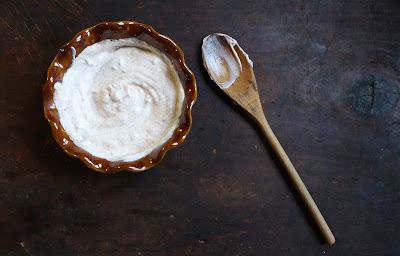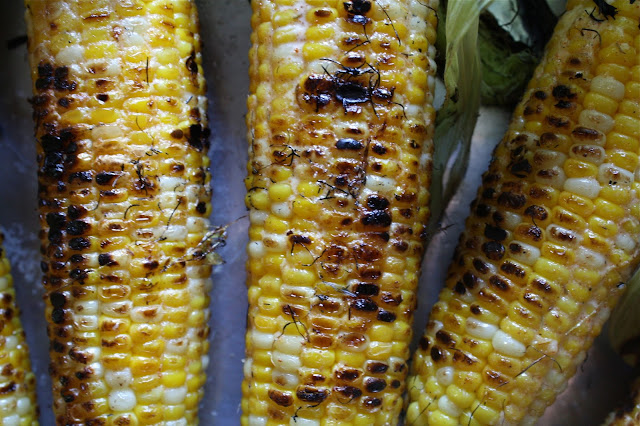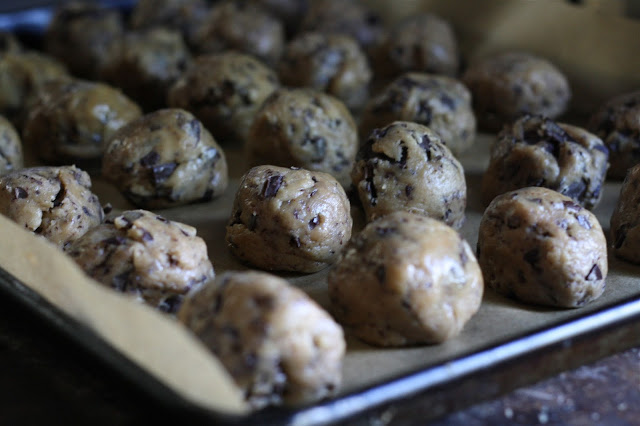'The Queen of Hearts, she made some tarts, all on a summer day. The Knave of Hearts, he stole those tarts, and took them clean away!" (Alice's Adventure in Wonderland) After having slices of the delicious key lime and chocolate pecan pies at the Bang Bang Pie Shop in Chicago last week, I had my temporary fill or rather self-imposed quota of pie. But it was pie week in the blog world and it occurred to me this was not intended to mean one was supposed to only eat pie. Real pie, not humble pie.
Technically a tart is not a pie, however, I had my heart set on making this Rustic Strawberry Tart, pie week not withstanding. Sometimes you just need to listen to and follow your heart. Mine hasn't failed me yet, except when I choose not to listen to it.
.
The Rustic Strawberry Tart didn't exactly turn out as I thought it would. The mascarpone cream was the main culprit (more on that later). I am not sure if I can say it turned out better than I had hoped or expected. And it certainly, most definitely wasn't worse. It was just different. And in my world different is a good thing.
Practice can indeed make things perfect. The first time I attempted rye puff pastry was in the making of the Blueberry and Rye Slab Pie. I fell deeply, hopelessly in love with the taste of the pastry crust (and the pie). However, I was not as enamored with the process of making the dough. In spite of reading the the dough can be a little fussy, I had hoped I would be given an exemption. Wishful thinking. Fast forward to this past weekend when the rye pastry dough making stars came into alignment. All of the anxiousness I had been secretly harboring over the making this dough was suddenly replaced with the kind of fearless courage I thought was reserved only for the Flying Wallendas. I won't go so far as to say I have now mastered this dough, but I can at least say I love everything about it.
When you hear the words rye pastry, the next words your brain almost immediately hears is rye bread. Other than having at least one common ingredient (rye flour), there are no other other similarities between them. Unlike the hearty, slightly sour taste of a (caraway) rye bread, the rye pastry dough has both sweet and nutty flavor tones, making it the perfect choice for use in both pies and tarts. Especially ones made with fruit. I would strongly encourage you to wait until your family and friends taste anything made with this pastry dough before revealing rye flour, actually dark rye flour was one of the ingredients. I am all for advocating for the adoption of the 'don't tell before you taste' mantra when serving something 'new'.
The number of turns made in rolling out the dough significantly affects the flakiness of the layers. More turns translates into more layers. At a minimum, the dough is rolled and turned twice. However, for this open-faced, baked until a deep golden brown tart crust, it was turned four times. In most contexts, flaky doesn't necessarily have a good connotation. But in the case of this dough, the highest compliment one could give to the baked tart crust is flaky.
The rolled out dough is brushed with an egg wash and pricked with a fork before going into a preheated 400 degree (F) oven. Sprinkling the edge of the tart with sanding sugar is optional, but makes for a nice as well as delicious finishing touch. If making a more rustic looking, rectangular or oval in shape tart, you won't need the sanding sugar.
Mascarpone cheese generally has a consistency similar to a softened cream cheese. For some unknown reason, the one I bought from Whole Foods had a much creamier consistency. Only because it had such a delicious taste I decided to use it. Little did I know how much more challenging the tart assembly was going to be. I needed to keep reminding myself I was supposed to be going for a rustic, not refined rustic look to the strawberry tart. In the end it all worked, however, the next time I make this open-faced tart, I will definitely use BelGioioso's mascarpone as it has a 'thicker, more spreadable' consistency. Staying with the brand I had used before versus going with one I was unfamiliar would have been the wiser option. Lesson learned.
If you create a more free form tart using almost all or all of the rye puff pastry, you will most likely need more than a pound of freshly sliced strawberries. For this tart, the strawberries were cut into 1/4 inch slices, then layered in a circular pattern (starting at the edge of the tart and working toward the center) on top of the mascarpone cream layer. Another tart finishing option would be to cut the strawberries in half, arranging in either a circular pattern or in rows. This is one of those 'no hard and fast' rules, anything goes kind of tarts. And almost any kind of berry or mixture of berries would pair perfectly with both the crust and lightly sweetened mascarpone cream. After you make and taste the rye puff pastry, you will find a reason to make this tart often.
Baked to a deep golden color, the buttery, crisp creates more of a hand-held versus fork eating kind of tart. Use your sharpest knife or even a pizza cutter to cut the tart into wedges, slices, squares, or any free form shape.
The Rustic Strawberry Tart is best served immediately after completely assembled as the dough will lose some of its' crispness if allowed to absorb the mascarpone cheese layer for more than a couple of hours. With the exception of cutting up and arranging the strawberries, the rye pastry dough could be rolled out and baked early in the day and the mascarpone cream mixture kept in the refrigerator until ready to use.
Making the strawberry tart round created a more refined rustic than rustic look. However, the arrangement of strawberries definitely made it look more rustic than refined. It tasted absolutely delicious. I would go so far as to say it was one of those 'steal' worthy tarts.
Note: This rye puff pastry is so flavorful it would be a punishable kind of sin to throw any of the dough away. After cutting a 10 inch circle out of the dough, I had enough left to make a half-dozen 'pie crust' cookies. Brushed with the egg wash and sprinkled with a coarse sanding sugar, the cookies baked to a deep golden color in 12-15 minutes.
Rustic Strawberry Tart (Rye Pastry adapted from Kim Boyce's recipe in her Good to the Grain cookbook, Super Simple Strawberry Tart recipe adapted from Yossy Arefi)
Ingredients
Dough
4.25 ounces dark rye flour (recommend Bob's Red Mill)
4.25 ounces all-purpose flour
3/4 teaspoon kosher salt
1/2 ounce (3 teaspoons) granulated sugar
6 ounces cold unsalted butter, cut into chunks
1 teaspoon cider vinegar
4 ounces ice cold water
Tart
1 to 1 1/2 pounds fresh strawberries, stems removed, cut into 1/4 inch slices
8 ounces mascarpone cheese (recommend BelGioioso Mascarpone cheese)
3 Tablespoons caster sugar, divided (can use superfine or granulated sugar)
1 large egg, for egg wash
Sanding sugar, optional
Note: Could use a mixture of berries (blackberries, raspberries and/or strawberries)
Directions
Dough
1. In a large bow, mix together the flours, salt and sugar. Add in the cold butter and using either a pastry cutter or your fingers, rub it into the flour mixture until it breaks up into small pieces. Note: If the day is exceptionally hot, the pastry cutter might be the better option.
2. Combine the cold water and cider vinegar in a measuring cup.
3. Make a well in the center of the flour/butter mixture, and slowly pour the water into the dough all while you are mixing gently. Continue mixing until the water is evenly distributed and the dough holds together when you squeeze it. Note: It may look a little dry. Do not worry as long as it holds together when you form it into a square. If it does not hold together, add a bit more cold water.
4. Transfer the dough onto a piece of plastic wrap, wrap tightly and refrigerate for at least one hour (or overnight). Note: I removed the dough after 90 minutes.
5. On a lightly floured surface, roll out the dough into a 9" x 11" (or thereabouts) rectangle. With the long side of the dough facing you, gently fold the dough into thirds. Then turn the dough so the seam is at the top or parallel to your body. Roll out the dough into another rectangle. Repeat the folding and rolling process for a total of 4 times. Wrap the dough in the plastic wrap and refrigerate for at least 2 hours or overnight. Note: I removed it after 3 hours.
Tart and Assembly
1. Preheat oven to 400 degrees (F). Line a baking sheet with parchment paper and set aside.
2. On a lightly floured surface, roll out dough into a rectangle, oval, circle or random shape to 1/8" or 1/4" thickness. Trim edges, if necessary, and transfer to baking sheet.
3. Using a fork, prick the crust to prevent the dough from puffing up too much. Brush with a beaten egg. Note: At this point, if using a coarse sanding sugar to create a finished edge, sprinkle on before placing in the oven.
4. Bake dough until it is a deep, deep golden brown (approximately 25-30 minutes of baking time). Remove baked dough from oven and allow to cool completely.
5. Combine the mascarpone cheese with two tablespoons of caster sugar (or superfine or granulated sugar). Spread the cheese mixture over the cooled crust.
6. Arrange strawberries in a decorative pattern. Sprinkle with remaining tablespoon of caster sugar.
7. Serve immediately. Notes: Cut with a sharp knife or pizza cutter when serving. Tart is best served the day it is fully assembled.
Currents, gooseberries and strawberries at the farmer's market.





















































